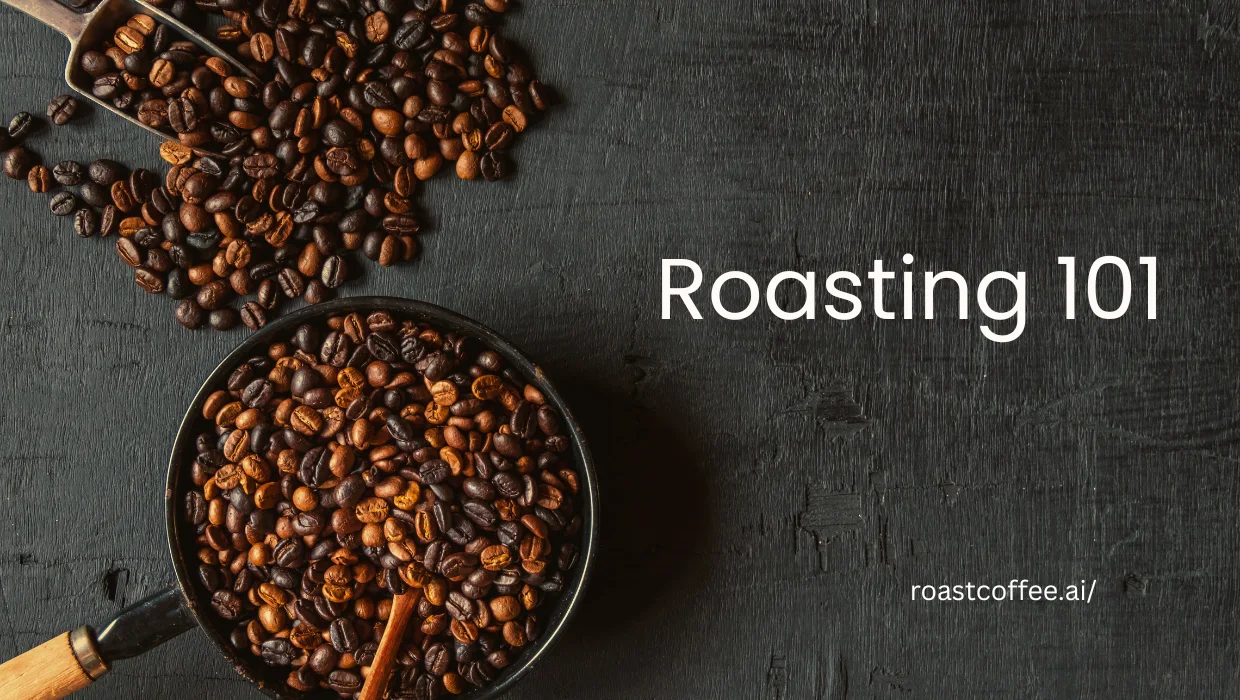Know Your Coffee Green Beans: Ethiopia Harrar
Welcome to the heart of coffee! There is no better place to start our green bean adventure than in Ethiopia, the very land where coffee was discovered. Ethiopian Harrar is a truly special coffee, known for its bold, clean, and delicate flavor profile that sets it apart from all others. We’ll dive into what makes this particular bean so revered and how you can bring its magic to your own home roastery.
🌍 Where It Is Grown
The Harrar region is located in the Oromia region of eastern Ethiopia. This is a mountainous and dry area, a stark contrast to the lush southern highlands. The coffee is grown by smallholder farmers on small plots of land, and the beans are often harvested from ancient, wild-growing heirloom varietals.
- Varietals & Growing Conditions: Similar to other Ethiopian regions, “Heirloom” is the term used to describe the thousands of unclassified, indigenous Arabica sub-varietals that flourish here.
- Altitude: Harrar coffee is grown at altitudes between 1,510 and 2,120 meters, classifying it as “Strictly High Grown” (SHG). The high elevation contributes to a dense, hard bean with concentrated flavors.
- Soil: The fertile volcanic loam soils of the Eastern Highlands provide the rich nutrients that define Harrar’s unique taste.
- Microclimate: The semi-arid climate, with its limited rainfall and high temperatures, is a crucial factor. It forces the coffee cherries to mature slowly and concentrates their sugars, which is essential for the natural processing method used here.
☕ What It Tastes Like
Ethiopia Harrar is celebrated for its distinctive “wild” and fruity flavor profile, a direct result of its unique processing method.
Unlike the clean, bright notes of a washed coffee, Harrar offers a complex and wine-like acidity.Expect a bold, pungent aroma with a heavy, full body. The most prominent tasting notes are often those of wild berries, especially blueberry, followed by complex spice and cocoa undertones.
Depending on the roast, you might also find notes of blackberry, dark chocolate, and a pleasant, slightly fermented or “mochafied” quality that has made it a favorite for generations.
💰 Market / Price Insights
- Pricing: Due to its unique flavor and limited availability, especially of higher-grade beans, Harrar coffee can be a premium product. Its price reflects its reputation as a unique and powerful single-origin coffee.
- Sustainability Efforts: The high demand for this distinct coffee has driven many cooperatives and traders to work directly with smallholder farmers, ensuring that the legacy of this prized bean is maintained. Fair trade and direct trade practices are becoming more common, which helps to improve the livelihoods of the farmers.
💧 Processing Method
The defining characteristic of Ethiopia Harrar is its processing method: it is almost exclusively naturally processed (also known as the dry process).
- Natural Process: This ancient method involves laying the whole, un-pulped coffee cherries on raised African drying beds or patios to dry in the sun. The process can take several weeks, and during this time, the fruit ferments and its sugars and flavors infuse into the bean inside. This is what creates Harrar’s characteristic fruity, wild flavor and heavier body.
- Taste Differences: This method creates a coffee with a much bolder, fruitier taste and a lower acidity compared to the washed process. The resulting cup has a rustic, earthy quality and a flavor profile that is truly unforgettable.
🔥 How to Roast
Roasting Ethiopia Harrar requires a different approach than its washed counterparts.
- For Beginners: Aim for a medium to medium-dark roast. A light roast might not fully develop the deep fruity and chocolate notes. Pushing the roast into the beginning of the “second crack” can unlock a beautiful complexity of dark chocolate and jammy berry flavors without burning the delicate fruit notes.
- For Advanced Roasters: The varying bean sizes within a single lot of Harrar can make an even roast challenging. Pay close attention to the development time after the first crack to ensure the inner bean is fully roasted. A slower, more deliberate roast profile can help bring out the full spectrum of its unique flavors, from a subtle blueberry jam to a rich, mocha-like finish.
💡 Post Roasting Requirement
- Allow your roasted Harrar beans to rest for a minimum of 3-5 days. This degassing period is crucial, especially for naturally processed coffees, to let the complex flavors settle and the carbon dioxide to dissipate.
- Store the beans in a cool, dark, and airtight container to maintain freshness.
😋 Flavor Profile / Tasting Notes
- Cupping Descriptors: Expect a heavy, syrupy body with a low, wine-like acidity. The dominant flavors are wild berry (blueberry, blackberry), followed by a rich, dark chocolate or cocoa undertone. The finish is often long and pleasant, with hints of spice.
- Comparisons: Harrar’s bold profile and heavy body make it a favorite for espresso and blends. Its fruit-forward nature and chocolaty notes are often compared to an intense, jammy red wine.
☕ Brewing Recommendations
Harrar’s robust flavors are best enjoyed with brewing methods that allow its full body to shine.
- French Press: This method is perfect for Harrar, as it retains the natural oils and fines, resulting in a rich, heavy-bodied cup that showcases its wild fruit and chocolate notes.
- Espresso: Harrar is a common component in many classic espresso blends due to its thick crema and bold, chocolatey flavor. Brewing it as a single-origin espresso shot is a treat for those who love a powerful, syrupy cup.
- Drip Coffee Maker: While not as ideal as the French Press, a standard drip coffee machine can still produce a good cup, especially when brewed with a coarser grind to prevent over-extraction.
🏡🔥 Tips for Home Roasters
- Start Small: Buy a small batch of green beans to start. This allows you to experiment with different roast profiles without a major investment.
- Listen Closely: Pay attention to the sound of the first crack. This is your cue that the roast is progressing.
- Log Your Roasts: Keep a log of your roast times, temperatures, and profiles. This helps you replicate a successful roast and learn from your mistakes.
The “Mochafied” Flavor and the Port of Mocha
The most fascinating fun fact about Harrar coffee is its direct link to the word “mocha.”
Today, “mocha” is widely known as a delicious coffee beverage made with chocolate. However, the term’s origin is much more historic and is tied directly to the ancient coffee trade.
For centuries, coffee beans from Ethiopia’s Harrar region and from neighboring Yemen were exported through the bustling port of Mocha (or Al Moka) on the Red Sea. Because of Harrar coffee’s distinctive, wild, and chocolate-like flavor profile—a result of its natural, sun-dried processing—the beans were a critical component of the coffee trade through this port.
Merchants would often blend the bold, chocolatey Harrar beans with other regional coffees and sell them under the port’s name. The taste of this blend was so consistently characterized by a deep, cocoa-like flavor that the very word “mocha” became synonymous with the combination of coffee and chocolate.
So, every time you order a mocha latte or a mocha frappuccino today, you are unknowingly paying homage to the ancient, naturally processed, and deliciously chocolatey beans from the wild highlands of Ethiopia’s Harrar region.
❓ FAQs
Q: Is Harrar coffee better for a dark roast or a light roast?
A: Harrar is generally more forgiving of a medium to dark roast. A dark roast helps to bring out the deep, rich chocolate and spice notes, while a light roast can sometimes be too wild and acidic for some palates.
Q: Why do Harrar beans vary so much in size?
A: The variation in size is due to the coffee’s heirloom varietals and the traditional, manual processing methods used by smallholder farmers.
Q: Can I use Harrar coffee for espresso?
A: Yes, Harrar is an excellent choice for espresso. Its natural process provides a heavy body and thick crema, and its bold, chocolaty flavors are highly sought after for espresso and espresso blends.
So, go ahead and explore this exquisite coffee. Its vibrant flavors and rich history are a testament to the magic of its origin. Until the next sip, keep exploring the world of coffee. Explore our roasting tips, or read about another gem in our “Know Your Coffee Green Beans” series!


